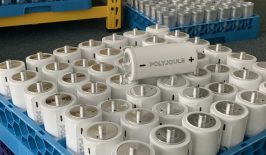The demand for fresh fish, shellfish and crustaceans is constantly increasing. The reasons for this are that the growth of world’s population and a generally increased standard of living in many countries mean more people can now afford more luxury foods, and are moving away from red meat as a source of protein. However, human interference with nature through conventional fishing is immense and has devastating effects. Both ecosystems and the environment as a whole are badly damaged by most fishing methods, bringing many species to the limits of their existence.
FACTS: OVERFISHING
Global fish catches reached a record 178 million tonnes in 2020, according to the FAO, about 30 percent more than in the 2000s and about 60 percent more than in the 1990s.
The FAO also states that globally around one third of fish stocks are considered overfished and around 60 percent are considered to be exploited to the maximum.
According to Deutschlandfunk Kultur, fish consumption in Germany, at around 14 kilos per capita a year, is below the global average of 20 kilos. By comparison, Portugal eats 57 kilos and Iceland as much as 90 kilos.
Many millions of tonnes of bycatch — including whales and dolphins — die every year due to fishing methods or a lack of protective measures.
Fixed catch quotas for the regeneration of species are often not respected or circumvented by illegal fishing.
Aquacultivation as an alternative
Aquaculture of marine and freshwater life is an alternative to this. Humans have long used it in the form of pond farming and shellfish culture, and more recently in the form of net pen, flow-through and closed flow-through systems. Aquacultures are therefore important production sites for fish and other aquatic species in the food industry.
Relatively new is the approach of aquaponic systems, whereby aquacultivation is combined with hydroponics. By cultivating fish and crops in a closed system, a cycle is created within which the nutrient-rich water from the fish is used to water and fertilise vegetable plants and then in turn cleaned by the plants, flows back into the tanks. Berlin’s StadtFarm also deliberately uses the African predatory catfish (Clarias gariepinus) in its fish breeding tanks. In its natural habitat, it is accustomed to confinement with many members of the same species and is therefore less stressed by this type of breeding. Regardless of the choice of aquaculture form, however, corresponding systems must become increasingly efficient in order to meet the rising demand.
The MonitorFish concept
Berlin start-up MonitorFish wants to optimise this form of animal husbandry with digital solutions. On the one hand, this can counteract increased overfishing and on the other improve aquacultivation as a whole. To do this, the company relies on an infrared camera with cloud-based AI software. The technology first collects data from the flora and fauna in order to be able to adapt to specific conditions and relate the recorded parameters. Even in poor visibility, the camera records various parameters without stress thanks to the built-in infrared sensor, and evaluates the data sets obtained using the AI software. This data can then be used to generate individual instructions for optimised growth strategies and improved fish welfare. In addition, the software can estimate the biomass of the creatures and make statements about temperature, oxygen content and pH value using other sensors.
Opportunities and risks of modern aquaculture with AI software
The benefits of this technology lie primarily in the protection of stocks of naturally occurring animal species and their habitats in seas, rivers and other bodies of water. Some species farmed in the aquacultures equipped by MonitorFish have reduced stress levels and higher reproductive rate. In addition, more and more consumers and producers are asking questions about animal welfare and the sustainability of their products. So, by combining MonitorFish’s cloud-based AI software system with aquaculture techniques such as aquaponics, aquaculture could hugely impact the sustainability of the fishing sector.
ARTIFICIAL INTELLIGENCE – CAN WE SAVE OUR PLANET WITH COMPUTING POWER?
Where are AI applications already being used in environmental and climate protection?
What are the particular opportunities, but also the risks, in terms of ecological and social aspects?
And what do future AI developments with real added value for the environment and climate look like?
You can find the answers here.
Nevertheless, it is foreseeable that the demand for fish and other creatures from fresh and saltwater will continue to increase worldwide. It is questionable whether aquacultures with sustainable aspirations can meet this demand in the long term. Most closed aquaculture systems have to be supplied with fresh water, heat and nutrients, and any wastewater produced has to be disposed of. Accordingly, as with conventional fishing, this is not an ecological cycle and the human footprint on the planet remains visible.
Looking at the facts, it is clear that the global demand for fish and other aquatic species needs to be brought down to a healthy level. Its consumption should once again become conscious and infrequent. Only in this way will nature be able to compensate for the fishing out of oceans, rivers and lakes, or to cope with the resources needed for aquaculture and the wastewater produced. If it were also possible to optimise sustainably oriented aquaculture systems such as aquaponics through AI-controlled software, moderate demand could be supplemented by this form of animal husbandry and animal welfare in the facilities could be increased at the same time. This would give species and their habitats, which are exploited to the limits of their existence in nature, a chance to regenerate.










